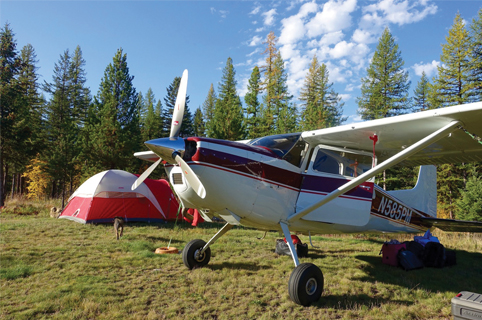
Ask any adventurous backcountry pilot, and they’ll tell you that there’s no better way to experience the beauty of nature than by airplane. In aviation, “backcountry” refers to remote destinations that are undeveloped, isolated, and difficult (or illegal) to access in anything other than a light airplane. In recent years, backcountry flying has grown in popularity as more and more pilots realize the value of slowing down and exploring all that nature has to offer.
If you’re looking to combine your love of the outdoors with your passion for aviation, backcountry flying is for you. But before you plan your first backcountry adventure, there are a few things you should know. Here are some tips for flying the backcountry:
Getting started
You don’t necessarily need to have a STOL aircraft to enjoy backcountry flying. While it’s true that some areas are limited to bush planes outfitted with large tundra tires, many remote runways can be accessed by a single-engine piston aircraft. Most importantly, you’ll need to know your plane’s capabilities and account for limitations for weight and balance. And while there’s no special FAA rating needed for flying the backcountry, you should check your insurance policy to be sure you’re covered for landing on unpaved landing strips.
If you’re a first timer, it’s also a good idea to ride along with an experienced backcountry pilot. The backcountry community is known for being friendly and welcoming. Reach out to local flying groups or an organization like the Recreational Aviation Foundation (RAF) to connect with experienced pilots and ask questions about the ins and outs of backcountry flying.
Skills needed
Backcountry flying may not require a special rating or sign-off from the FAA, but it does require a firm grasp of flying skills that you might not practice every day, including short field takeoffs and landings.
While taking a mountain flying course is not mandatory, it’s well worth it to gain the knowledge and experience necessary to fly safely in rugged or mountainous terrain. During the course, you’ll learn how to perform maneuvers like steep ridge crossings, tight canyon turns, and confined area takeoffs and landings. You’ll also learn about mountain meteorology, types of terrain, emergency considerations and survival skills.
What to bring
What to pack for a backcountry adventure depends on where you’re going and what you plan to do once you get there. Along with hiking and sight-seeing, many backcountry fliers enjoy fishing, camping, hunting, or even just sitting around a campfire with friends and family. In addition to any gear needed for your planned activities, it’s always wise to carry a satellite phone or personal locator beacon, first aid supplies, and survival equipment. Finally, be sure that every person in the airplane has appropriate clothing and footwear for the terrain you’re flying over. For example, if you’re crossing over snow-covered areas, a jacket and closed-toe shoes are must-haves in case of an emergency landing.
Backcountry destinations
There are numerous off-airport airstrips in North America alone. Idaho, Utah, Montana, Colorado, New Mexico, North Dakota, Washington, Alaska and Canada have some of the most popular destinations for backcountry flying fun.
The Recreational Aviation Foundation (RAF) is a valuable resource for pilots interested in backcountry flying. Based in Montana, the organization is committed to preserving, protecting, maintaining and creating backcountry airstrips for recreational access. Their website provides a wealth of information (including safety briefings) on airstrips across the United States.
We’d love to hear about your backcountry flying adventures. Share your stories with us on Facebook or Twitter.